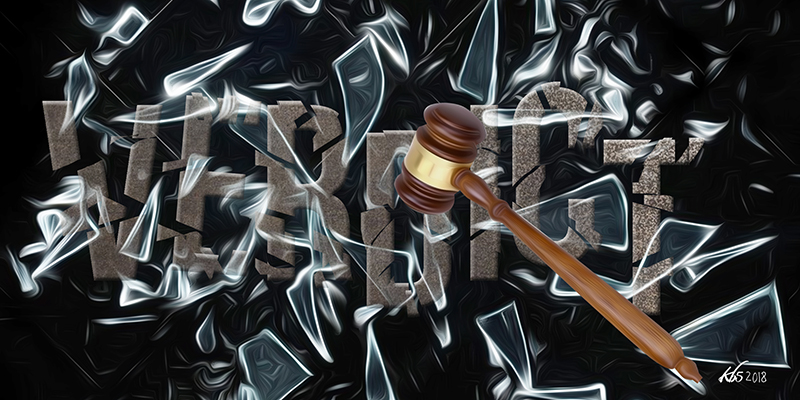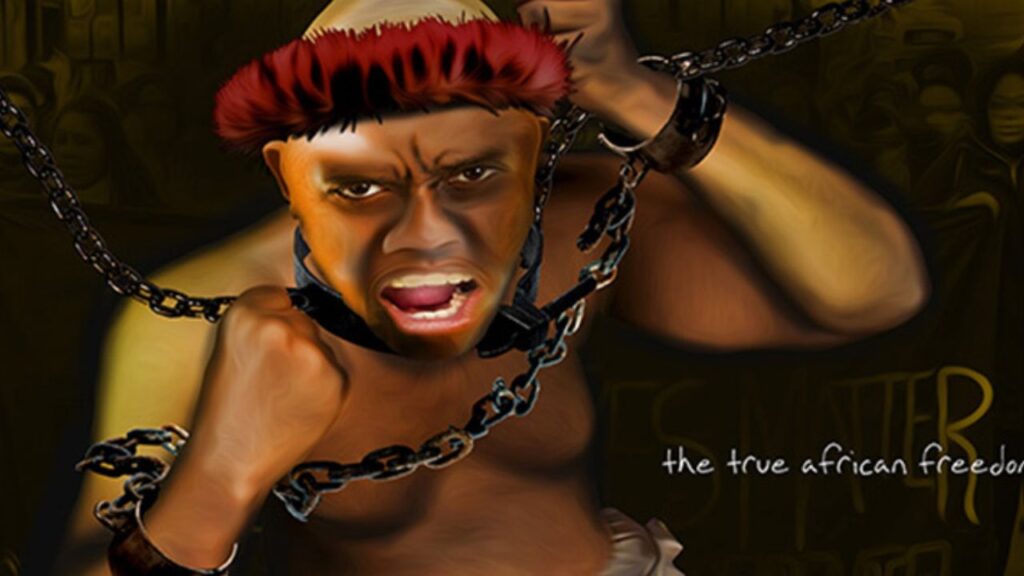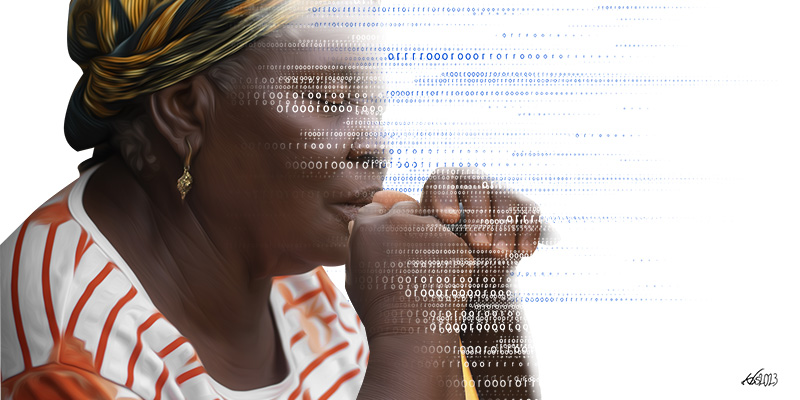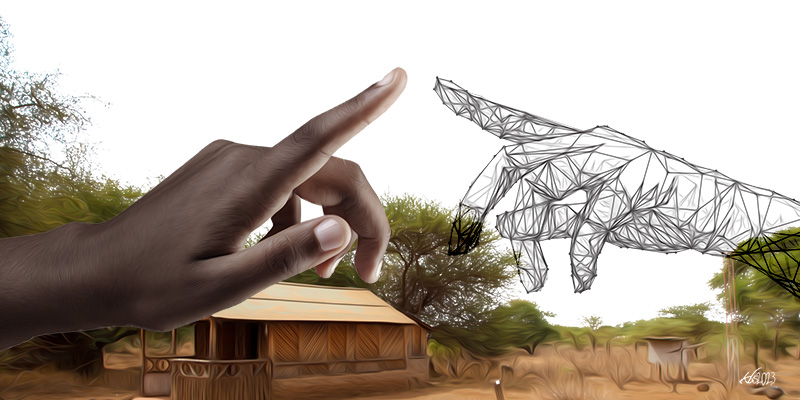Lawyer Julie Aullo Soweto glanced at her wristwatch and realised that she was running late for the 11 am pre-trial conference that was scheduled to take place on that morning of 14 November 2017. She robed quickly and debated whether or not to wear her advocate’s wig. In the end, she chose to leave the wig behind as she made her way from her Biblica House office to the Supreme Court building. She had filed an application at the Supreme Court for scrutiny of the materials from the 26 October 2017 repeat presidential election, and had a good feeling about its chances.
Almost single-handedly – over three days and with little sleep in between – she had drafted the application for scrutiny of election materials from the 8 August 2017 poll in the Raila Odinga petition. The success of that application, in which 19 of the 26 prayers were granted, enabled the petitioners to not only discover anomalies in the election results filed in the Supreme Court but also exposed the Independent Electoral and Boundaries Commission’s (IEBC) suspicious refusal to grant access to the computer servers used to receive, transmit and collate results. It likely played a significant role in persuading four of the six judges to nullify the election of Uhuru Kenyatta as president.
The petitioners hoped to use the scrutiny to prove that the results published on the portal did not correspond to those on the official paper documents. The IEBC’s lawyers, however, proceeded to paint a grim picture of the information overload that the court would have to bear if it accepted the request.
Despite playing a critical role in the first petition, Soweto had not sought the public’s attention from the row of seasoned litigators assembled for the case but the petition challenging the repeat presidential election brought by civil society activists Njonjo Mue and Khelef Khalifa, would thrust her to the fore. Soweto was determined to bring her experience from the first successful petition to bear on the second one. She had gone over the application, which had been allowed in August, tightening loose ends and closing gaps. She whittled down her original 26 prayers to a round figure of 20. It was the same bench of judges; she was certain they would allow it. They did not.
The petitioners hoped to use the scrutiny to prove that the results published on the portal did not correspond to those on the official paper documents. The IEBC’s lawyers, however, proceeded to paint a grim picture of the information overload that the court would have to bear if it accepted the request. They inundated the judges with frightful claims of the terabytes of information that would take two years to work through – while conveniently neglecting to mention that, in fact, these were photographic images of results forms. (Images occupy substantial space on databases.)
The question raised by this response is how the IEBC itself managed to sift through the terabytes of information within a week to establish who had won the vote.
In the event, the petitioners were granted the order for the original voters’ register but the IEBC demanded Sh80 million to have it photocopied. But even had the petitioners been able to afford the price of photocopying the register themselves, it would have taken several weeks to produce one and, in the end, the petitioners were simply given a soft copy of the register. This incident serves to illustrate the needless hurdles that the petitioners had to overcome.
The court granted only 2 out of the 20 requests around the scrutiny – allowing access to results declaration forms for the constituency, county and national tallying centres and permitting access to the voters’ register at the petitioner’s cost. The court’s ruling said:
Some of the prayers have been declined due to the sheer impracticability of their implementation given the short time left for the determination of the petitions at hand. Others have been declined because they were not pleaded with sufficient particularity in the Petition. Yet others were declined on grounds that they are couched in such general terms as to be no more than fishing expeditions.
The court had explained that the prayers had been “declined on the basis of very clear grounds, which will be elaborated in a detailed version of this ruling to be issued by the Court at a later date”. More than 18 months since that ruling was read out in open court, those reasons are yet to be made public.
Scrutiny is intended to demonstrate openness of the electoral process, wrote Justice Maraga in a 2016 paper, adding that it was one of the tools courts used to ascertain the integrity of an election. It is a court-supervised forensic investigation into the validity of votes cast and the subsequent determination of who ought to have returned as the winning candidate.
Scrutinising the servers
The decision to allow scrutiny of the servers in the August 2017 petition was notable in its provisions (showing a court that had a firm grasp of ICT matters), a far cry from what had happened in 2013. The orders on ICT were detailed and authoritative, indicating that the court’s ICT literacy was higher than it had been in 2013 when arguments about Uhuru Kenyatta’s The National Alliance (TNA) party sharing a results platform with the IEBC seemed to fly over the judges’ heads. There was a certain burden that the court understood it needed to discharge to command respect in the wider judiciary.
Although the 2013 scrutiny showed appalling errors, with some polling stations recording turnouts as high as 203 per cent, and numerous discrepancies between the votes announced and those recorded in the official result forms, the lawyers for Odinga were unable to create a coherent narrative that would force the judges to confront what had happened in the election.
The scrutiny in 2017 was a marked departure from what had transpired in 2013 when the Supreme Court ordered the Chief Registrar of the Judiciary to take charge of the exercise. That scrutiny got underway in fits and starts more than 24 hours after it was ordered, and was characterised by systems collapse, poor coordination and unequal representation of the various parties. Davis Chirchir and Winnie Guchu, who had both been members of the IEBC’s predecessor, the Interim Independent Electoral Commission, and were now working for The National Alliance Party, were present throughout. In contrast, lawyers for Raila Odinga showed up one evening at 8 pm, milled around the hall at the Kenyatta International Conference Centre for an hour, and left. By the time the court was being informed that the scrutiny had not been completed, Odinga’s lawyers had no report of their own to file.
Although the 2013 scrutiny showed appalling errors, with some polling stations recording turnouts as high as 203 per cent, and numerous discrepancies between the votes announced and those recorded in the official result forms, the lawyers for Odinga were unable to create a coherent narrative that would force the judges to confront what had happened in the election.
During the August 2017 petition, the petitioners sought to make the scrutiny produce the smoking gun that would prove their case. They alleged that not all the records of the vote count in the presidential election had been received at the national tallying centre when the results were announced; thousands of polling station results documents and scores of constituency results were missing, a claim acknowledged by the IEBC.

Their lawyers asked the court to order a scrutiny of these documents. They also sought an audit of the servers, alleging that the IEBC’s system of electronically transmitting results from polling stations and constituencies had been compromised.
The judges not only allowed the scrutiny and the audit, but also ordered the registrar of the Supreme Court to supervise it. Petitioners and respondents were allowed two agents each while the lawyers for each side would be granted 15 minutes to make submissions. The court ordered the registrar to produce reports of the scrutiny and audit by 5 pm two days later.
The registrar of the Supreme Court supervised the scrutiny of the results forms, which took place at the Milimani Ceremonial Hall in Nairobi. A staff member of the court’s ICT department and two independent, court-appointed ICT experts oversaw the audit of the IEBC servers at the commission’s headquarters at Anniversary Towers in Nairobi. There had been disquiet at the commission, especially around the ICT system – and with good reason; Chris Msando, the commission’s head of ICT had been found brutally murdered barely a week to the election.
At noon on Tuesday 29 August 2017, James Orengo, Odinga’s lead advocate, reported to the court that the audit of the servers had not yet begun. By way of explanation, IEBC lawyers claimed that the delay in allowing access to the servers was due to the fact that the system’s high-level security was based in France – a two-hour time difference with Kenya – and their suppliers were still asleep at 9 am Kenya time when the audit was supposed to have begun.
The stonewalling hid a major flaw in the system: the server simply wasn’t there. A report by the Auditor General later revealed that most of the equipment that was to be used to transmit and interpret results had not been delivered, while part of the equipment for processing the results at the data centre was delivered five months after the 8 August 2017 election.
Justice David Maraga asked the parties to work together to comply with the order so that the court could receive a report by 5 pm, or reasons for the failure would have to be provided. “If some of your clients’ agents are in Europe, or wherever, they must have been told yesterday. Wake them up and get the order complied with,” he said.
The stonewalling hid a major flaw in the system: the server simply wasn’t there. A report by the Auditor General later revealed that most of the equipment that was to be used to transmit and interpret results had not been delivered, while part of the equipment for processing the results at the data centre was delivered five months after the 8 August 2017 election. The country had gone to the election without a back-up database for transmitting results and the IEBC did not have the capacity to analyse the data it received from the polling kits.
The reports on the scrutiny and audit were ready when the court reconvened just after 9 pm on Tuesday, 29 August. Orengo stated that the court’s order had only been partially complied with; the GPS locations for each of the Kenya Integrated Election Management System (KIEMS) devices used at the polling stations were not released. The read-only access to the servers the court had ordered had not been granted and agents were only given live access; they could not view or access the logs or see the log-in trail of users.
The 20-hour court-ordered scrutiny of results from the 8 August presidential election raised red flags for documents from at least 63 constituencies, 30 of which did not have a serial number and another 33 of which did not have a security watermark. Some were unsigned and others had typographical errors. Some forms were printed in landscape layout instead of the standard portrait layout of the original forms. Some forms had candidates’ first names printed before their surnames whereas on the standard form the surname preceded the first name.
The 30 constituencies that filed results forms without a serial number accounted for 1,407,746 valid votes, while documents for the 33 constituencies holding 1,850,706 valid votes failed the ultra-violet test because they did not have a watermark.
In his comments about the audit, Orengo said that the scrutiny of the forms showed that some did not have security features, others did not have serial numbers, and close to two-thirds of them did not have the handover section filled out. He said that the court audit had revealed that the election had been “shambolic”.
“Our case has been proven that forgery, trickery and alteration of documents has been used in various ways. We pray you should declare the election of the third respondent as not valid and not in accordance with the constitution,” he added.
But lawyer Fred Ngatia, who represented Kenyatta, said, “It is a fair report. It is our submission that this report fortifies what we have said all along that this election was a fair election.”
Justices Maraga, Mwilu, Wanjala and Lenaola constituted the majority that voted to annul the election of Uhuru Kenyatta for not having been done in accordance with the Constitution and the law. Dr Willy Mutunga’s students at university (Justices Maraga, Wanjala, Ibrahim and Lenaola) appeared to have improved on the record of their teacher.
Justices Jackton Ojwang and Njoki Ndung’u disagreed. Justice Ibrahim, who had been taken ill on the second day of the hearings, did not vote.
Justice Ndung’u, in her dissenting opinion of 1 September 2019, questioned the results of the scrutiny and wrote in detail about her own private examination of the documents in question, which produced different results. Justice Maraga felt compelled to repeat his opening statement after the dissenting opinions had been read out in open court: “The greatness of a nation lies in its adherence and its fidelity to its Constitution, and its strict adherence to the rule of law …”
Days later, Kenyatta’s Jubilee Party accused Supreme Court registrar, Esther Nyaiyaki, of doctoring the scrutiny and insinuated that she had colluded with the petitioners to massage the results. For good measure, the Ethics and Anti-Corruption Commission (EACC) began an inquiry into the allegations of impropriety on the part of the registrar. It remained an open question and, during the petition against the repeat presidential election, the Supreme Court granted limited access for scrutiny and the registrar kept a low profile.
Civil society as petitioner
All presidential election petitions in Kenya have been filed on the deadline day – hinting at the pressure under which they are prepared. They have also been decided within the constitutional deadline of 14 days after filing.
The data centre at InformAction offices, where some of the evidence for the civil society-backed petition was being assembled, had to be moved several times when staff and volunteers noticed a military helicopter circling over the compound for hours.
In the run-up to the 26 October 2017 repeat election, police officers had attempted to forcibly enter the Africa Centre for Open Governance offices to shut it down for alleged tax transgressions. Its Executive Director, Gladwell Otieno, had been one of the petitioners challenging Kenyatta’s 2013 election. The Kenya Human Rights Commission, another critical civil society actor, was being threatened with closure over alleged financial impropriety.
The data centre at InformAction offices, where some of the evidence for the civil society-backed petition was being assembled, had to be moved several times when staff and volunteers noticed a military helicopter circling over the compound for hours. Katiba Institute suffered a major power outage in the week before the deadline for filing a petition. All these organisations were working together under the Kura Yangu Sauti Yangu (KYSY) initiative to support free, fair and credible elections.
With threats and physical attacks on civil society organisations escalating as the deadline for filing the November 2017 petition drew near, the team preparing the case for civil society activists Njonjo Mue and Khelef Khalifa worked discreetly through the nights from a secret location.
They had up to midnight of the last day to file the petition. The court required eight copies for itself and several others for the different parties. The main challenge was ensuring that everything was filed on time. Some important documents had to be couriered by motorcycle to get to the registry on time.
Though they had hastily put together a strong petition, the petitioners’ lawyers felt the deck was stacked against them right from the start. There was hostility even at the registry, with court staff providing misleading information about the time of filing papers.
The respondents had put together an impressive assembly of legal talent to represent them — mostly senior lawyers and household names in Kenya. The petitioners’ lawyers were a team of experienced but younger lawyers. Kenyatta’s and the IEBC’s lawyers then used their seniority to obtain better treatment from the court. The lawyers for the petitioners felt that they were before a court that had already made up its mind – a court that appeared to be looking for reason and justification not to entertain the petition in spite of the strict standards it had set for the IEBC when it overturned the first election.
There were no friendly faces on the bench, but some judges were egregious. Judges appeared to take pleasure in demolishing the evidence and the manner in which it was introduced. One lawyer noticed that Justice Ojwang was being particularly hostile towards Julie Soweto. He appeared to be cross-examining Soweto when she began reading the resignation statement by former IEBC commissioner Roselyn Akombe. “He descended into the arena of litigation. Of all the judges, he was the one that was hardest on us,” said one of the lawyers on the team. “It was like we were litigating against them.”
Lawyer Jane Odiya, an experienced advocate, led the team that went to access the election results forms. She was accompanied by young data entry professionals and university students. Even though they were working under a tight deadline, the scrutiny team was initially stonewalled and then given the run-around at the IEBC’s Anniversary Towers offices. “The IEBC officials slow-walked the scrutiny even though we had the court order in hand,” recalls Haron Ndubi, co-counsel for the Mue-Khalifa petition.
Although IEBC lawyers accompanied the scrutiny team to the commission’s offices, they quickly left after giving assurances that the process would go on smoothly. That was not to be; IEBC officials took a long time to supply files. The scrutiny team wandered the halls of Anniversary Towers with no one to assist them. The IEBC corridors were teeming with people who looked like plainclothes police officers and who followed the scrutiny team everywhere, including into elevators and out of the building. One lawyer said she believed some of the officers trailed them in a vehicle as they went home.
The sense of frustration among the scrutiny team was palpable and, after tempers flared, the team was led into a cosy office at Anniversary Towers where they found lawyers for the commission and a senior IEBC official, who assured them that the conference room for examining the results documents was now ready. Once inside the conference room, the reason for the delay became quickly apparent: the Jubilee team, consisting of lawyers and party officials, like lawyer Faith Waigwa, was already present.

The files were not to be copied during the scrutiny. The team could not enter the boardroom with their phones or stationery of any sort. The ban on any writing material was enforced with the help of plainclothes police officers posted at the door. The head of the scrutiny team had to go back to the Supreme Court to seek clarification on the order they had received. It was only after the judges stressed that the team could write down their findings that the exercise resumed. “We felt tortured,” admitted one of the petitioners’ advocates.
After the scrutiny, the team quickly put together its report, and the advocates fought to have it admitted into the record. The court declined, defeating the purpose for which the orders had been sought and issued. The court said the scrutiny report was merely one party’s view and not a rigorous finding arrived at by all parties to the petition. Both Kenyatta’s and IEBC’s representatives had been present when the petitioners scrutinised the results documents but they were there more to impede the process than to participate in it. The scrutiny fell short of the legal definition of one — it was, to be generous, a review of the documents.
The petitioners asked why the forms used to collate the presidential results differed from those the IEBC had brought to court. They further pointed out that the numbers shown in the election portal differed from the ones on the collation forms.
The rejection of the report and the limitation of its scope “broke all of us,” admitted another advocate who worked on the petition.
They believed that a proper scrutiny would have made plain the far greater illegalities in the 26 October election than even those found in the 8 August poll that had been nullified by the Supreme Court. The lawyers point out that the fact that the judges did not entertain the scrutiny gave away the endgame; the petition would be thrown out.
Yet, what the Supreme Court was being asked to do in the November petition was not easy. Even if there were merits to the case, it would be very difficult for a president to accept that he had lost the election, petitioned by a group of civil society activists. Privately, some of the judges felt that Odinga should have come back to court. Still, nullifying one election and paying such a heavy price for doing so had blunted the appetite for a repeat performance, unless a senior political player was asking for it.
After Odinga withdrew from the fresh election a mere fortnight to polling day, the Supreme Court felt that it need not enter into a political dispute. Perhaps the judges would have been less irritable had they felt that the political contestants were taking them more seriously. In the event, the judges treated the petitioners as if they had brought the petition as proxies for Odinga’s National Super Alliance (NASA).
From the outset, the court’s attitude had betrayed the judges’ reluctance to entertain the petition. They dismissed it and unanimously found that Kenyatta had been validly elected. They found no fault with anything that the electoral commission had done in the fresh election. NASA expressed sympathy with the court, saying that the judiciary had been intimidated but the judges too felt abandoned by the political players.
Kenyatta would be sworn in as president on 28 November 2017 at a stately but sparsely populated inauguration ceremony presided over by the Chief Justice. Would this judicial mea culpa suffice to heal the rift between the Judiciary and the Executive?
The full judgment, released on 11 December 2017, read in part: “The … petitioners have not discharged the burden of proof to the standard established by this Court. At no time, in our view, did the burden shift to the [first] and [second] respondents.”
The court tipped its hand by blaming the petitioners for the shortcomings of the IEBC. Although the petitioners made serious allegations against the IEBC and its capacity to conduct an election, in their ruling, the judges blamed the petitioners for failing to provide proof of the allegations.
The judges pointed to the disenfranchisement of a huge swathe of the country that did not vote on 26 October and, curiously, blamed it on the petitioners. This again shows that the judges seemed to treat the petitioners as if they had brought the petition as NASA proxies. The judgment noted that the violence that took place in certain areas where the election could not be held was promoted by the petitioners. The court’s judgment failed to create future disincentives for electoral fraud and malpractice.
Law scholar Muthomi Thiankolu has faulted the Supreme Court for failing to appreciate the informational asymmetry between the IEBC and potential petitioners. He argues that given this imbalance, the court ought to adopt an inquisitorial rather than an adversarial approach in proceedings.
The judges pointed to the disenfranchisement of a huge swathe of the country that did not vote on 26 October and, curiously, blamed it on the petitioners. This again shows that the judges seemed to treat the petitioners as if they had brought the petition as NASA proxies. The judgment noted that the violence that took place in certain areas where the election could not be held was promoted by the petitioners. The court’s judgment failed to create future disincentives for electoral fraud and malpractice.
In the 2013 petition, the Supreme Court had pronounced on the effect of a candidate withdrawing from a fresh election or dying after the nullification of an election; in such a case, a fresh poll having all the characteristics of a new election (such as fresh party nominations) would have to be held. In the November 2017 decision, the court walked away from that observation.
As Kenya marked its 55th anniversary of independence on 12 December 2017, the Judiciary was silently marking the end of its 60 days of independence.








